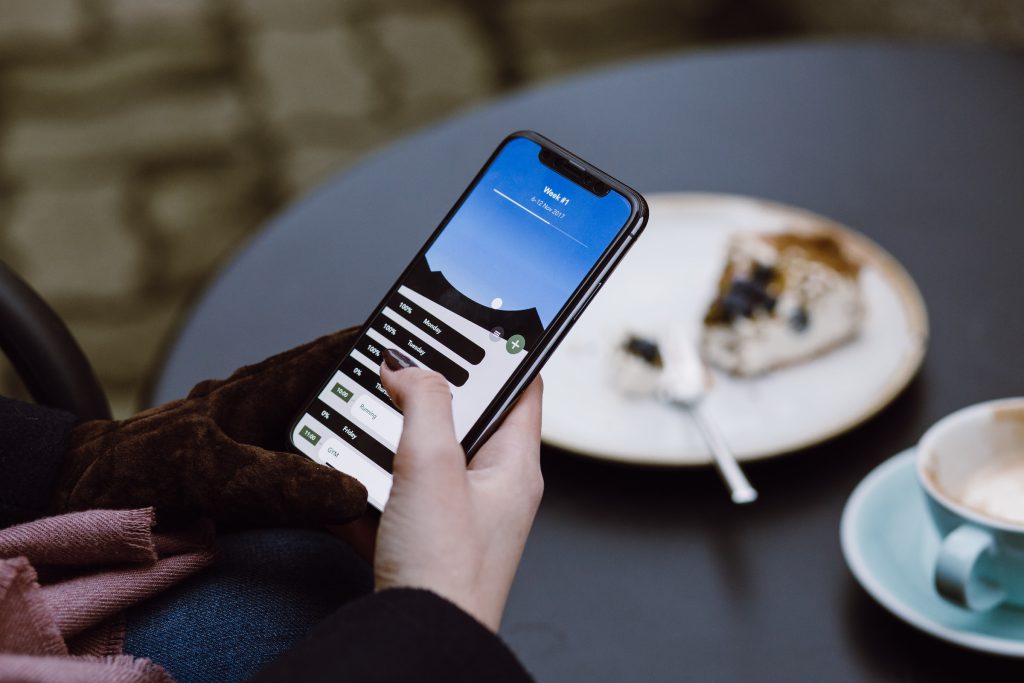Blog

Want to have an MVP? Here is why you should use Flutter.
Why choose Flutter while creating MVP?
Choosing the technology for realizing your idea is very important. However, for your customer, it might not be important at all. Why? Because for them the final result is what matters. On the contrary, it is crucial for your business and its financial liquidity.
Your decision will have long and short-term consequences, which you should consider. First, you need a solution that will allow you to quickly share your app with your customers to get their feedback and validation of your idea. In the long run, you should pick the technology that allows for stable and scalable business growth.
Flutter seems to be great for both of them, but first…
Let’s start with: What is MVP?
Minimal viable product (MVP) determines the moment of the development; when launching the product on the market it’s possible. When we talk about MVP, we know our app is not perfect yet, although it should perfectly solve the primary client’s goal.
For example, in the case of an app designated for quick exchange of text messages: MVP MVP should be great at performing exactly this functionality. Features, like contacts import or logging with different social media, can be added in the next stages of development.
What’s essential – MVP is a product launched to the market. Despite missing features, it should fulfill its main purpose well enough that we could not be ashamed to charge for it from our friends.

What’s the MVP’s goal?
It is early validation of the business idea. Thanks to it, we can get answers to key-question such as:
- Will clients be willing to pay for the app?
- How will our solution be positioned on the market?
- Does our product make sense?
- Would the client like to use it?
Thanks to this verification, we would be able to check if the product made by us is necessary and wanted.
If not, it will be a bitter pill to swallow, even though it will help us avoid a huge mistake. Then, we can stop the development process and save money that otherwise we would unnecessarily spend on a product that no one needs.
But, if the response from the market is positive, we are on the right track. Now we have to focus on gathering data and feedback analysis. It allows us to create a development plan. We can see which features are missing and what we should correct.
This information also lets us obtain funds for further development, mainly from:
- Income generated by a launched product.
- Investors who are more likely to invest in an already existing idea.
What is the difference between MVP and prototype?
In contrast to MVP, you can not sell a prototype. It’s just a visualization of the idea that it’s going to be represented.
Paraphrasing Joel Beasley from Modern CTO: If you’re designing a hairbrush, you can cut the pattern out of the foam and tape it to the wooden handle. It will probably brush your hair somewhat, but for sure it is not a market-ready product.
Why is it worth it to create MVP using Flutter?
Currently, Flutter is the most popular cross-platform framework. Allowing software development for many platforms using one code-base
It was created as an open-source project by Google. They continually invest to maintain and grow it, by constantly releasing new features and versions. With the increasing popularity of Flutter, the support of its community also grows. They actively create new software packs and training materials, which boost the process of development.
Flutter is certainly booming and in demand, but what makes it great for creating an MVP?

Short and effective time to market.
A number of improvements that Flutter proposes to developers significantly increase the efficiency of their work. A good example is a hot-reload functionality. Thanks to it, a developer can make interface corrections in real-time, even side by side with a UI specialist. It’s a huge time-saver!
However, there is one single most important factor by which Flutter allows for extremely cost-effective MVP development. It is the ability to publish applications on two key mobile platforms: IOS and Android, from one code base. So we only need one development team to make an MVP accessible to most mobile devices.
What are the advantages and consequences of having one development team?
The cost of the programmers’ work is usually the largest expense when creating software. Because of it, companies often have to make a difficult decision, even before starting the project: On which platform will they want to launch their product?
Consequences of creating MVP for only one platform
Let’s assume that we decided to create our application on Android. We hired a team of talented programmers, but our idea didn’t get market validation. Are we sure that our concept would also not catch on on IOS? In this case, we probably won’t get the answer.
In a scenario when our app was warmly taken, we could continue its growth. We added new functionalities, which translated into new customers. Our app is already mature, and we are ready to increase the scale of our business by making it available on another platform. We hired new developers that would write twin app from scratch. Not only do they need to create a new application, but they also need to work fast enough to catch up with the changes constantly being made by the original team.
What are the effects? The version for the following platform is reduced compared to the original one, or its premiere is delayed?

MVP created by 2 dedicated teams, Android and IOS.
Having enough funds, we can decide to hire 2 teams to create MVP for both platforms.
Then each team will carry out its tasks separately, which, however, will cause several potential problems:
- One team will have to catch up with the other.
- Likewise, the other team will have to wait.
- Each team will have to implement the business logic on their own platform and solve similar problems.
Developing one application by two teams simultaneously results in double the amount of code to be maintained. At worst, users of different platforms might get two products under the same name and logo.
MVP created by one team with Flutter.
Applications created with Flutter are written by one well-integrated team. As a result, new functionalities will always be delivered at the same time to all platforms on which we decide to provide our solution. We will also be able to benefit from having one code base.
Having one code base brings a number of benefits:
- The less code, the cheaper it is to maintain, from the organization perspective.
- Bug fixes will be implemented faster.
- User experience path will be designed once, and immediately implemented on all platforms.
- We are sure that our client’s experience using the Android application is the same as on iOs. Thanks to this, we can conduct analyses and draw conclusions more accurately.
Of course, developing for multiple platforms simultaneously requires extra work and lines of code, but this is a relatively small increase compared to having a separate application for each platform.
Good to know:
Flutter is an excellent solution for MVP when we want the application to look the same on all platforms. However, the more we want our application to look natively, the more cost and complexity of our code will increase.
And what with the backend team?
Flutter has very good integration with another Google product: Firebase. It provides several useful functionalities such as bug reporting, or distribution to testers. However, above all, it works great as a cheap and efficient database and user authorization service.
The community has created a wide selection of packages to facilitate the monetization of your product. They enable:
- Shopping through Play and AppStore.
- Sales directly in your application.
- Support from ad providers like Google Mobile Ads.
Thanks to this, you will not need a separate backend team at the MVP stage and for a long time afterward.
Multiple platforms create a broad target audience that generates more feedback.
By publishing your MVP on multiple platforms, you reach a larger audience right from the start.Thanks to this, you can verify your idea in several key market segments and collect more feedback. More data increases the chances of your product’s success and its further development.

What after MVP? That is, scaling your business with a mature product.
Most of the companies that choose Flutter also choose to develop their software for Android and iOs. However, if the product has passed a positive market verification and has gone beyond the MVP phase, it is worth looking for opportunities to increase the scale of the business.
The web version is often the next step in development. As it does not require installation, it promises to quickly attract new customers who will be able to test it at a relatively low cost of commitment.
The possibility of developing new platforms such as macOS, Windows, or Linux is worth mentioning. Such an expansion allows access to new users and the long-term maintenance of the existing ones. Moreover, if the recipient of your product decides to change their system, they will not have to look for alternatives from competitors after the migration.
Good to know:
If we want to scale our business to other platforms in the future, it is worth providing this information to the development team at an early stage of work. Unfortunately, community-contributed bundles are often limited to mobile platforms only. Late revocation of such a decision can be relatively costly.
Remember that no technology by itself can guarantee clean architecture and clean code. If we want to ensure the stable development of our product in the future, we should take care of the quality of the code from the very beginning.
Freedom to express your idea
Flutter guarantees a rich set of ready-made UI elements and animations, that your team can quickly implement and develop. These components follow the principles of Material Design (Google and Android) and Cupertino (IOS). As a result, even the simplest Flutter applications please the eye right from the start.
Additionally, SDK Flutter is responsible for rendering elements on the screen. Therefore, nothing prevents you from creating your own animations or interface fragments. Your team can freely translate any of your ideas onto the screen.
Exceptional application speed. Flutter compiles to the native language of the platform, so your clients get an optimized experience right from the start at the default 60 frames per second.
Your team will love it.
Today’s IT market is not easy. When a programmer chooses a job, the proposed salary is crucial. However, the technology used in the project is playing an increasingly important role. The more it is attractive and liked by developers, the better the chances of getting and keeping specialists.
No wonder frameworks and programming languages constantly strive to be as programmer-friendly as possible.
Flutter, with its speed, consistent syntax of the Dart language, and a rich set of ready-made elements, fits this trend perfectly.

To sum up:
When choosing a Flutter to create an MVP:
- You will quickly deliver your application to the market.
- You will gain cost-effectiveness with one development team for Android and IOS.
- You will collect feedback from the entire mobile market.
- Your product will be aesthetic and fast.
- You can seamlessly transition from MVP to product maturity by scaling your business to other platforms.
Flutter is a new and exciting technology. The business values it for the wide possibilities it gives and by developers for the pleasure of working. Of course, like any other technology, it has its strengths and weaknesses. However, the unique set of benefits it offers makes Flutter well suited for creating an MVP.
Get latest insights, ideas and inspiration
Take your app development and management further with Codigee
Let's make something together.
At Codigee, we value transparency, efficiency, and simplicity. No overengineering. No wasted time.
Just straight-up execution.
We are obsessed.
Every billion-dollar company started with one decision, one step, one iteration. The key? Taking action and executing fast.
